Strategic pendulum. Part of 4
F. Conrad von Gettsendorf was deceived by M. Auffenberg's boastful reports and considered it possible to move the majority of the army of the latter southward by striking the right flank of the Russian 3 army advancing on Lviv.
Meanwhile, replenishment was infused into the 5 Army, and on August 22 it again launched an offensive, playing a decisive role in the ensuing battle. August 22 The 25 Corps conducted a successful battle at Mashev with the Austro-Hungarian 10 Corps (more than 1,6 thousand Austrians were captured), on August 25 troops of P.A. Plehve, interacting with the 21 Army Corps of the 3 Army, inflicted Posadov defeated a group of Joseph Ferdinand (lost 2,4 thousand people by prisoners and 18 guns).
The toughest 26-27 battles of August ended in a Russian victory thanks to the bold maneuver of P. A. Plehve. First, the cavalry corps formed by it was thrown to the rear of the Austrian 4 Army: at Krasnobrod and Frampol he made a mess in the Austrian rear, defeating the wagon train and part of the cover, further contributed to the defeat of the Archduke I. Ferdinand in the interests of the 3 Army. Secondly, wedging between the Archduke group and the 4 army, P.A. Plehve moved two groups of corps of his army in divergent directions - assisting the neighbors: the right group (25 and 19 body) contributed to 4, and the left (5 th, 17 th and equestrian corps) - 3 th armies.
43. Russian battery is shipped through the Galician river.
The threat to the rear of the enemy, who acted against the 4 and 9 armies, had a positive effect on the situation prevailing on the front of these armies. Before that, the frontal attacks of their troops on the fortified positions of the enemy were unsuccessful - and the armies waited for the completion of the maneuver of the 19 and 25 corps.
But the operational breakthrough on the front of the Russian 9 and 4 armies at Lublin and Hill later also was successful. Of great importance was the fact that three fresh corps (18 Army, Guards and 3 Caucasus Army) were sent by the Russian Supreme Command to the northern flank of the Battle of Galicia. This allowed these armies to go on the offensive, which led to a major success in the battles of 20 on August at Sukhodol and 22 on August at Lopenniki. A head-on battle with the Austro-Hungarian 10 Corps broke out with the assistance of the neighboring 5 Corps. 1-I Guards Infantry Division (especially the Life Guards Preobrazhensky Regiment) suffered serious losses near Vladislav. The trophy was also serious: under the Sukhodolami, up to 60 officers and 5 thousand soldiers of the Austrian 2 and 24 divisions of the 10 corps were captured and captured, 8 machine guns were captured. F. Konrad Gettsendorf wrote about the heavy losses of the 10 corps, noting that 89 and 90 people remained in the 500 and 800 infantry regiments, respectively. [Feldmarchal Conrad. Aus meiner Dienstzeit 1906-1918. B. IV. Wien, 1923. S. 663.].
21 August 100-I landshturmennaya brigade was defeated (near 500 people were captured). Under Lopenniki, as a result of the battle with units of the 3 Grenadier Division of the Grenadier Corps, almost the entire 45 regiment (regiment commander and 1575 soldiers and officers) of the Austrian 24 division was captured. The Guards rifle brigade, having suffered significant losses, hit the 95-th landscape team, captured the battery in the area of Wojciechow, the 23-division of the 18-th army corps captured more than 1 thousand prisoners, machine guns and guns, 45-division, more than 1,5 thousand prisoners, machine guns and guns, 2-division, more than 9 thousand prisoners, machine guns and guns, XNUMX division captured more than XNUMX ths. Thousands of prisoners, XNUMX mountain guns, machine guns. This testified to the success of the soldiers of the XNUMX Army.
The Austrians were assisted by divisions of the Silesian Landwehr Corps. Corps R. von Voirsh was involved in stabilizing the situation on the front of the broken 10 corps. General R. von Voirsh is an excellent front commander, and his unit is one of the best in the Kaiser army.
The effect of this compound was found immediately. Thus, the Romanov Forest and Urshulin 3-th Caucasian Army Corps with a brigade of the 82 Division, a counterattack of the German 4 Landowning Division of the Corps R. von Voirsch, were captured, losing thousands of people to 1.
The heroic battles of the Guards and Grenadier Corps near Tarnavka are associated with the name of the corps R. von Voirsh.
By the evening of August 26, the Guards and Grenadier corps advanced to 1 km, with great losses, taking possession of the heights at Ursulin and Zarashev, and then lay under the fierce fire of parts of the 5 corps. The 2-th Grenadier Division, the consolidated brigade and the 3-th Caucasian Army Corps suffered heavy losses from the enemy’s combined fire from the forest and heights east of Tarnavka. But then the Life Guards Moscow Regiment again attacked the Tarnaw Heights, knocking over German and Austrian units and, with the support of the Guards grenadiers, captured 30 guns of the German 4 groundworking division (including 6 150-mm howitzers).
On August 27, the Guards Corps overturned the right flank of the 5 Corps of the enemy, and this success was transmitted to the entire front of the 4 Army - and in some areas the enemy began to retreat in disorder, throwing weapon and surrendering to the masses. 5 captured [White A. The Battle of Galicia C. 311.], about half of them are Germans. As a result of these battles, the Russian guards in the battles of 26-27 of August captured most of the artillery of the German corps - 42 guns [Zvegintsov V.V. Leib Guard Moscow Regiment 7.11.1811.-7.11.1936. Paris, 1936. C. 48.]. The losses of the Moscow Life Guards Regiment - 63 officer and 3200 soldiers, the Life Guards Grenadier Regiment - 50 officers and 2500 soldiers.
As a result, the right flank of the Austrian 1 Army and the German corps were defeated and began to withdraw. The materials of the Reichsarkhiv testify to the loss of the Silesian Landveor Corps during the 3 of the day of the fighting to more than 8 thousand people (including to the 7 thousand in the 4-th Landward Division) [Reichsarchiv. Der Weltkrieg 1914 - 1918. Bd 2. S. 334.]. A large number of prisoners testified to the severe defeat of the enemy's 3's corps - the Austrian 5 and 10 of the army and the German Silesian Landverny. The 18 Corps reached the Vistula, and the guards and grenadiers broke through the Austro-German front in a key area - at Tarnavka. And it was of major strategic importance. 4-I army captured 9 days before 15 thousands of prisoners and 55 guns.
As a result, 27 August under the blows of the 4 and 9 armies, the enemy who was threatened with a deep bypass of the 25 and 19 corps of the 5 army, faltered. The departure of the 5 Army's units to the rear of the enemy's 1 Army, led to the command of the latter deciding to divert the operational association for p. San The maneuver of the levoflang group of the 5 Army was the most dangerous for the enemy's 4 Army. On August 27, the Russians captured Tomashev (moreover, over 1 thousand prisoners were captured). August 28 The X. NUMX Corps of P. A. Pleve's army defeated the group of Joseph Ferdinand, who was covering the rear of the Austrian 5 Army.
7 card. Gorodok battle Dates in a new style
The South-Western Front is entering a general offensive. Under his onslaught, having large forces of the Russian 5 Army in the rear of M. Auffenberg's troops, the Austrians “broke down” and from August 30 began a general retreat.
47. Photos from the Galician front.
The 5 army became a free force in the Gorodok battle (meaning similar to the role of the English expeditionary corps at the final stage of the Marne battle, but the 5 army acted much more actively), to retard the actions of the Austrians, nothing more.
In the battles with the armies of the northern flank at the stage of the Gorodok battle, only the captured enemy lost more than 20 thousand people, 71 gun and a large number of machine guns. From the remnants of the army group of G. R. Kummer, the Austrians formed one division (106), while what remained of the 100-th landscape team and the 95-th division was withdrawn from the front and used as staged troops.
On the southern flank, the enemy struck at the joint between the 3 and 8 armies, primarily against the corps of the internal flanks. At the direction of the main attack, a group of troops was created, superior in terms of forces and means to the 3 and 8 army. The enemy, who possessed twice as large forces, seized the left flank of the 8 army. The Austrian 2-I Army with a blow from Komarno 27 August rejected the 24-i Army Corps for the river. Scherzhets.
The battles for Ravu the Russian 26-27 of August on the front of the 3 Army were among the hardest in the Battle of the Galician. The terrain favored the enemy, representing forest and swamp defiles, in which the Austrians created a strong defensive line in two lines. By the end of August 27, Rava-Russkaya remained in the hands of the Austrians. The key position of the 10 Corps "Goat Ridge" repeatedly passed from hand to hand. By the evening of August 29, the Austrians managed to cut in between the Russian 3 and 8 armies, and the fate of the battle on the southern flank of the Galician battle hung in the balance. The offensive by E. Böhm-Ermolli broke into the center of the 8 Army.
The situation in the Lviv direction was becoming very difficult for the Russians. 8-I army counterattacked using the latest reserves, but the coverage of its left flank was stopped. The Austrians, having shifted the center of gravity of their efforts to the 8-th army band, were late. At the front of the armies of P. A. Plehve, A. E. Evert and P. A. Lechitsky, a turning point occurred. 28 August Russian captured Tomashev and began to threaten the rear of the strike force of the Austrians. From the north to the rear of the Austrian 4 Army, the 5 and 17 Corps of the 5 Army were already leaving.
On the August 8 Army 30 sector, the enemy led persistent repeated attacks against the right flank and center, especially against the 8 Corps, but all these attacks were not only repulsed - 7, 8 and 24 Corps themselves switched to offensive.
The Austro-Hungarian troops interrupted the battle and began to retreat, because their 4 and 1 armies were threatened with defeat.
The result of the 2 offensive of the 21-30 August Army armies of August was the heavy defeat of the Austro-Hungarian 1 Army and Joseph Ferdinand group and the retreat of the 2, 3 and 4 armies. The maneuver of 5 army corps groups broke the Austrian front connectivity - helping the rest of the army of the front, the 5 army applied a deep coverage maneuver, advancing in eccentric directions.
Thus, an attempt by the Austrian command, interrupting the offensive between the Vistula and the Bug and gathering on its right flank more than 2 / 3 forces of the Galician front, defeat the Russian 3 and 8 army and liberate the city of Lviv, after 6 days heavy fighting ended in failure - despite the tactical successes of the Austrian 3 and 2 armies. The Austrian 30 divisions had to retreat quickly - fearing for their communications, over which the threat of a flanking attack from the Russian 9, 4 and 5 armies hung from the north.
The Austrians themselves, according to the commander M. Auffenberg, characterized the Gorodok battle as a “call for happiness,” realizing that it was unlikely to change the situation in the current circumstances. The pursuit of the Austro-German troops, though not as decisive as it could be, led them to new losses. Thus, the 14 Army Corps almost destroyed the Austrian brigade near the village of Lipy 31 August. On the same day, the 5 body captured more than 400 prisoners and 8 howitzers, and the 17 body captured more than 2 thousand prisoners, transports and many weapons. In the area of Rava Ruska, up to 9 of thousands of prisoners were captured, 30 guns, a lot of machine guns. The 10 Cavalry Division captured the 31 of August - 1 of September in the Javorov region of the Austrian 6 and 14 corps, 4 howitzers, 2 light guns, a lot of projectiles and wagons.
To be continued
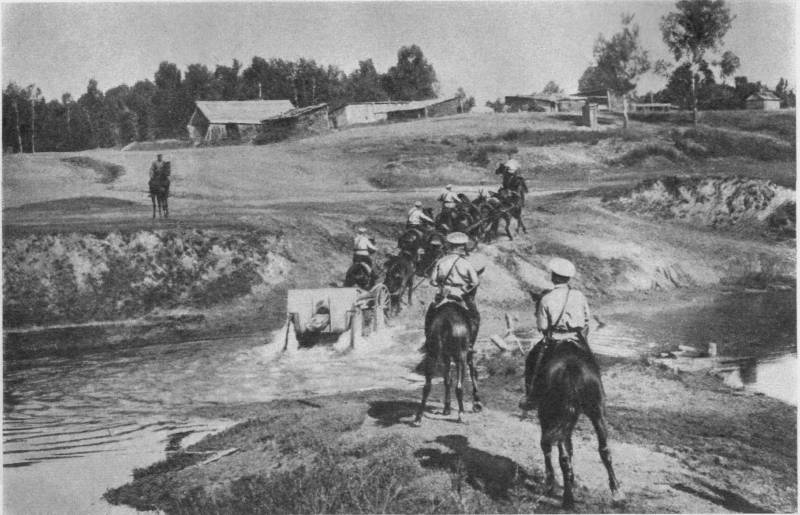
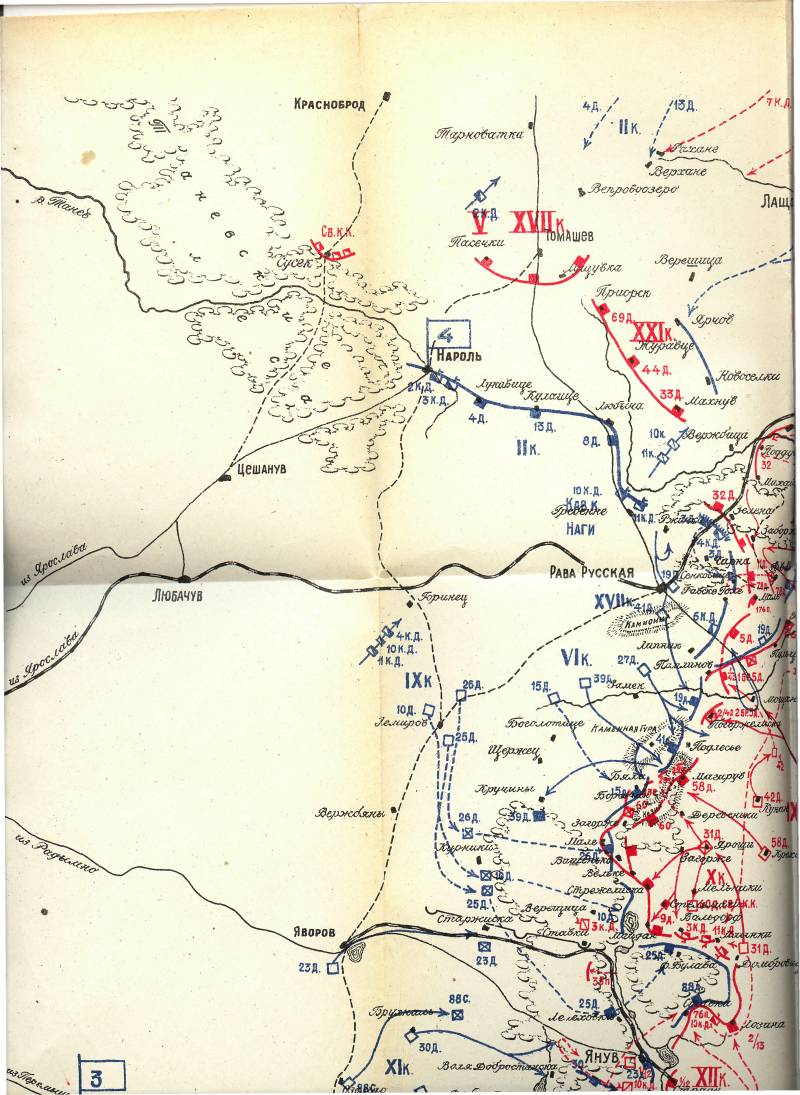
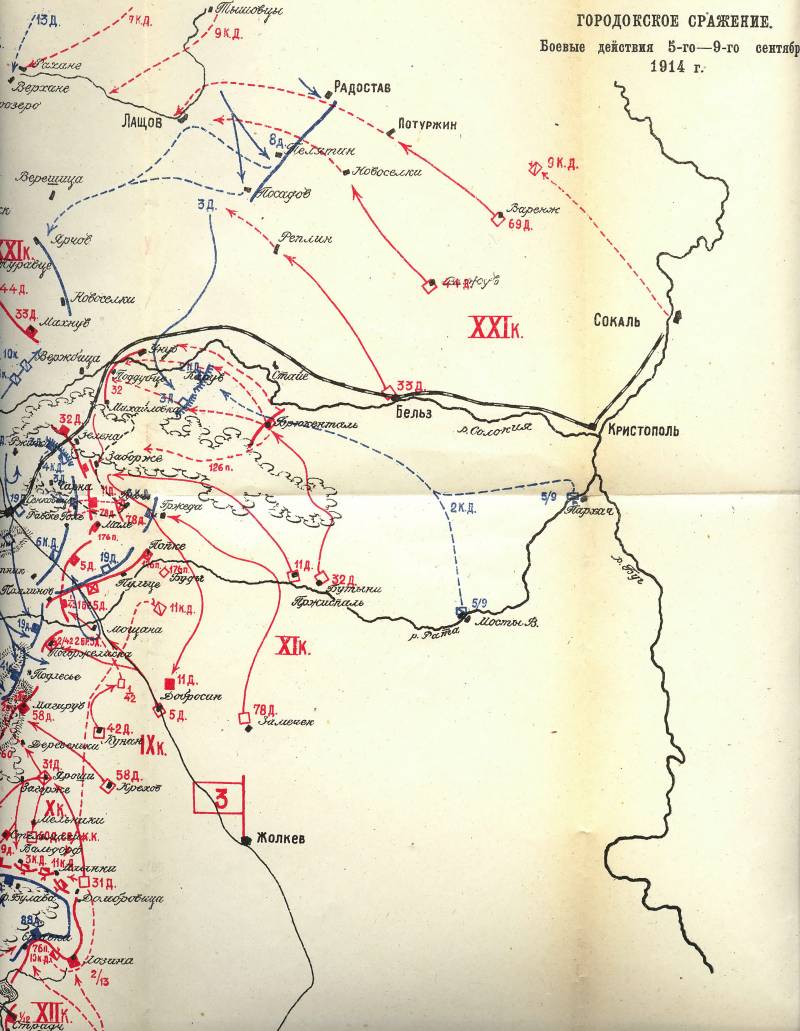
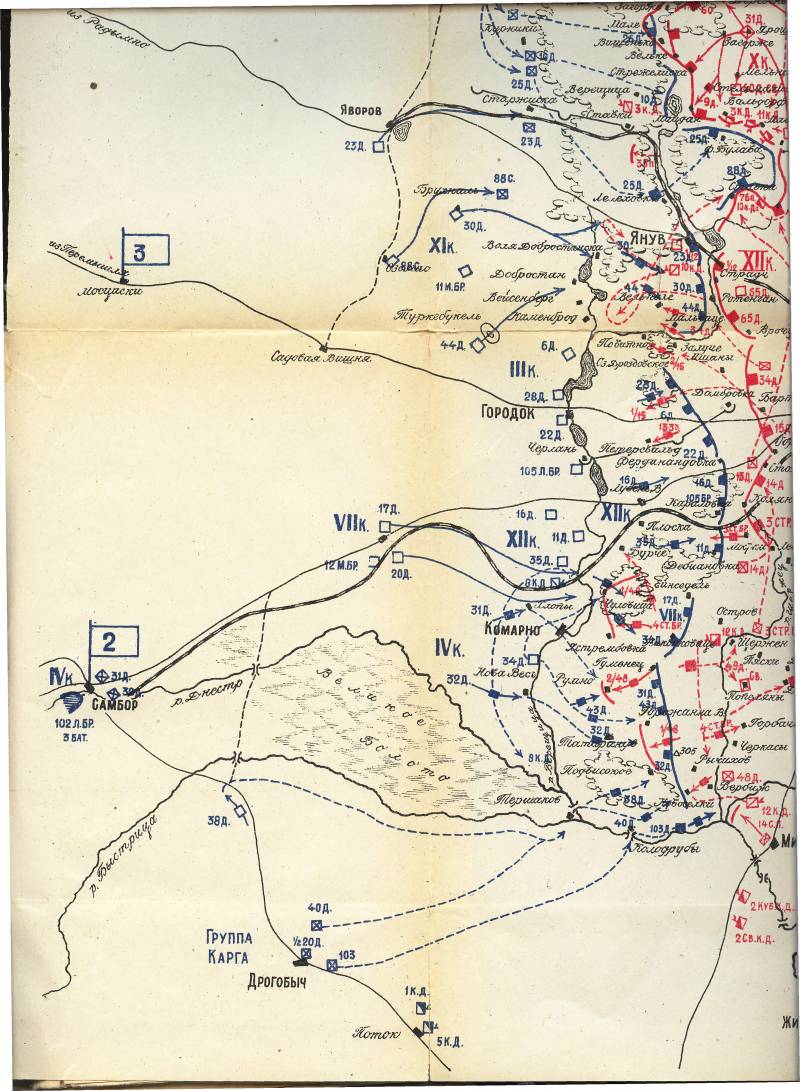
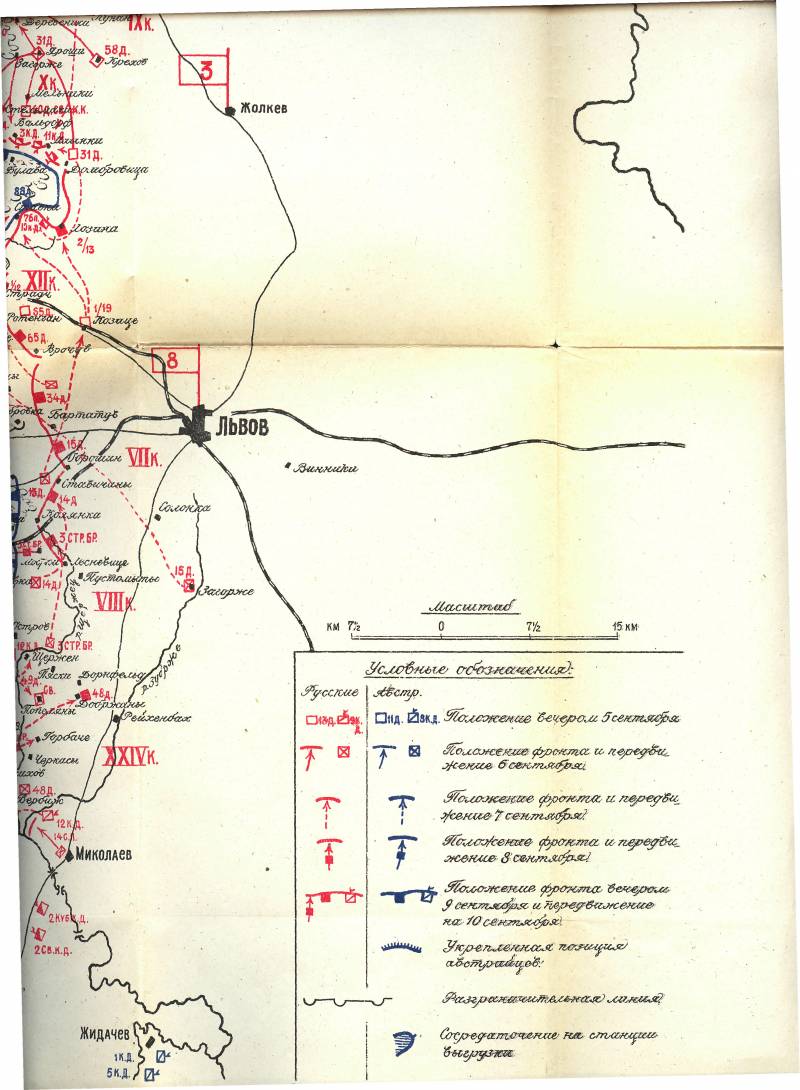
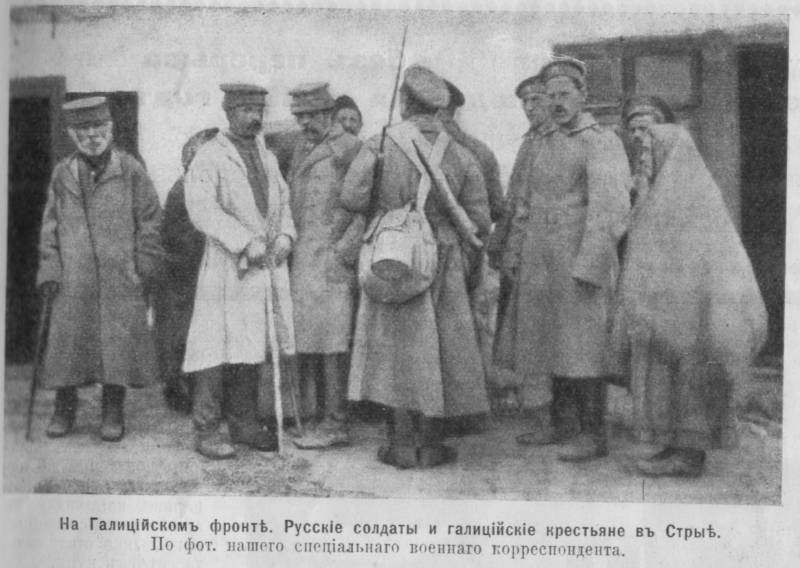
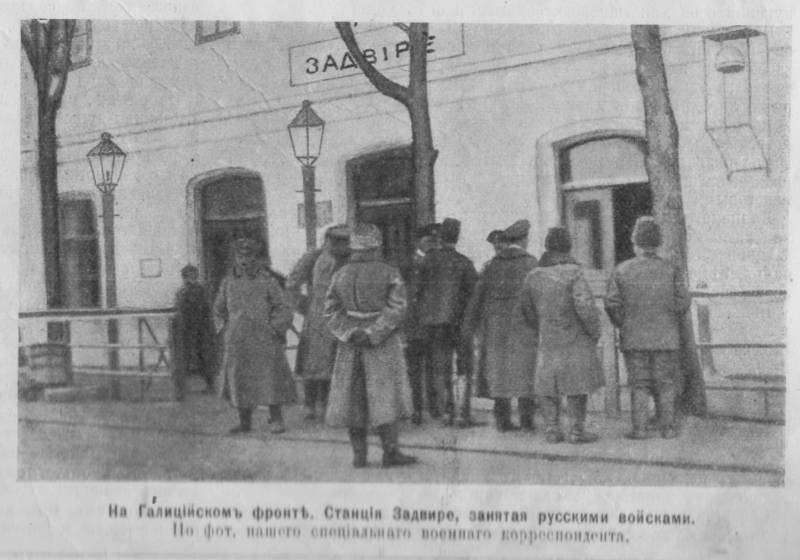

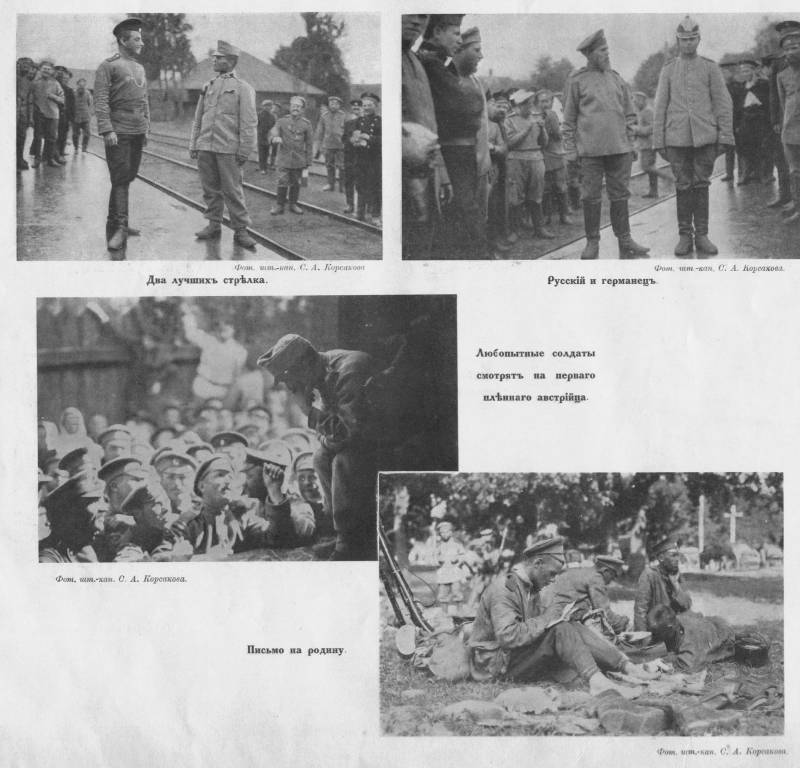
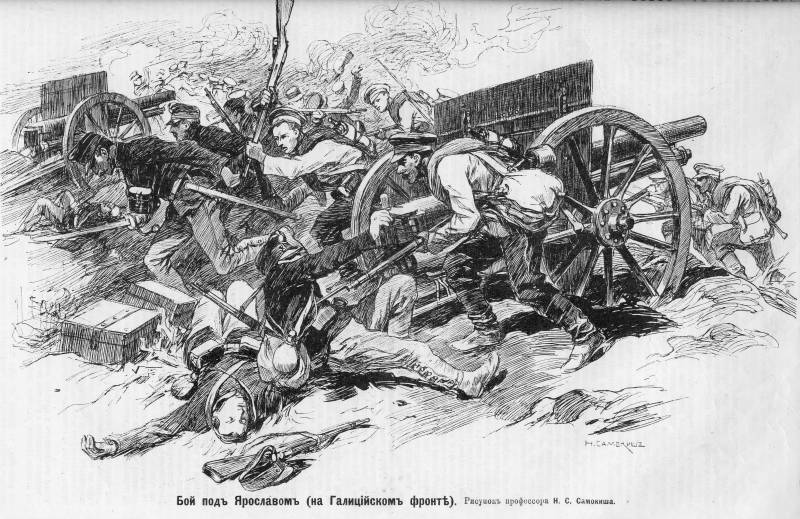
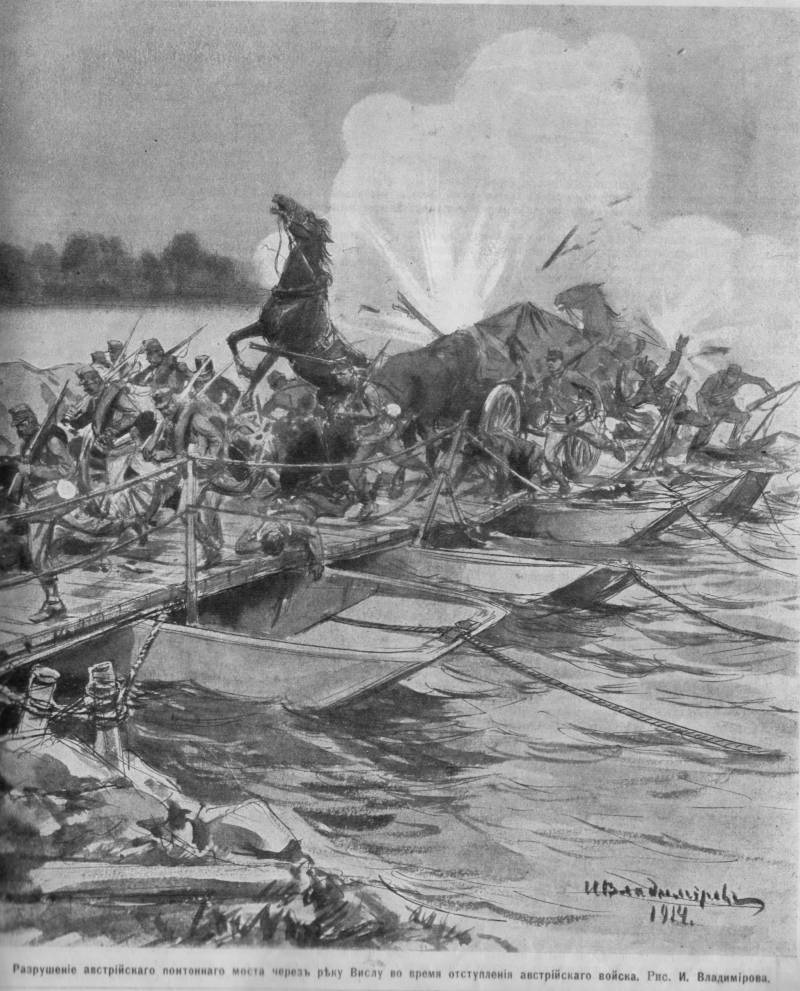
Information